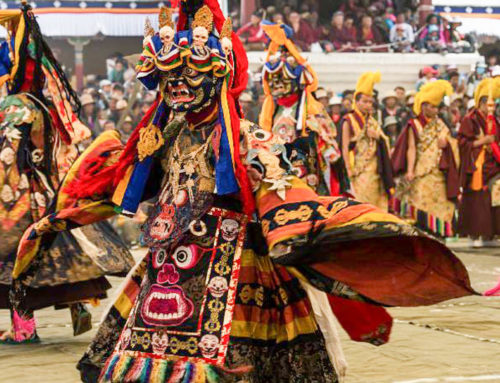These scriptures, known as the Kangyur and Tengyur, encompass a vast range of sutras, texts, commentaries, treatises, and translations. They serve as a guide for practitioners, offering insights into the nature of reality, ethics, meditation practices, and the path to enlightenment.
Kangyur and Tengyur
The Kangyur and Tengyur are two essential collections of Tibetan Buddhist scriptures. The Kangyur, meaning “Translated Words of the Buddha,” consists of the translated sutras directly attributed to the Buddha himself or his immediate disciples. It is regarded as the primary source of the Buddha’s teachings in Tibetan Buddhism. On the other hand, the Tengyur, meaning “Translated Treatises,” contains commentaries, treatises, and interpretations by prominent Indian and Tibetan scholars.
The Kangyur and Tengyur together comprise a vast repository of spiritual knowledge. They are meticulously preserved and held in great reverence by Tibetan Buddhist monastic institutions and practitioners worldwide. The Kangyur consists of around 108 volumes, while the Tengyur encompasses approximately 225 volumes. These collections provide invaluable insights into various aspects of Buddhist philosophy, psychology, ethics, and meditation practices.
Sutras and Texts
Sutras are among the most important types of texts found in Tibetan Buddhist scriptures. They are the recorded dialogues and discourses of the Buddha, offering profound teachings on fundamental concepts such as impermanence, suffering, emptiness, compassion, and wisdom. Sutras play a pivotal role in guiding practitioners on their spiritual journey and understanding the nature of reality.
Tibetan Buddhist sutras can be classified into different categories based on their content and teachings. Some notable categories include the Prajnaparamita Sutras, which emphasize the perfection of wisdom; the Mahayana Sutras, which advocate the bodhisattva path; and the Vinaya Sutras, which outline monastic rules and discipline.
Within these categories, there are numerous revered sutras. The Heart Sutra, Diamond Sutra, Lotus Sutra, and the Sutra of Golden Light are examples of highly regarded sutras in Tibetan Buddhism. Each sutra offers unique insights and teachings that resonate with practitioners at different stages of their spiritual journey.
Commentaries and Treatises
Commentaries and treatises play a crucial role in interpreting and explaining the teachings found in the sutras. They provide in-depth analysis, clarification, and contextualization of the Buddha’s words, making them more accessible and applicable to contemporary times. Commentaries are often written by renowned Buddhist scholars, while treatises explore specific topics, such as philosophy, logic, psychology, or meditation techniques.
These commentaries and treatises not only shed light on the intricate aspects of Buddhist philosophy but also offer practical guidance for spiritual practice. They serve as valuable resources for deepening one’s understanding, resolving doubts, and enhancing the effectiveness of meditation and contemplative practices.
Prominent Tibetan Buddhist masters, such as Nagarjuna, Chandrakirti, and Je Tsongkhapa, have authored influential commentaries and treatises that continue to inspire and guide practitioners to this day. These works are revered for their clarity, scholarly rigor, and profound insights into the nature of reality and the path to liberation.
Translations and Publications
Translations play a vital role in making Tibetan Buddhist scriptures accessible to a wider audience. Over the centuries, dedicated translators have worked tirelessly to render the original Sanskrit and Tibetan texts into various languages, enabling people from different cultural backgrounds to benefit from these profound teachings.
Translators meticulously study the original scriptures, consult commentaries, and engage in extensive research to ensure accuracy and fidelity to the original teachings. Their work bridges the linguistic and cultural gaps, allowing individuals around the world to explore the wisdom contained within Tibetan Buddhist scriptures.
Notable translations in Tibetan Buddhism include those carried out by scholars like Kumarajiva, Xuanzang, and Thupten Jinpa. These translations have significantly contributed to the dissemination of Buddhist teachings, fostering a global appreciation for the profound insights found within the Kangyur and Tengyur.
Conclusion
Tibetan Buddhist scriptures, represented by the Kangyur and Tengyur, form an invaluable repository of spiritual wisdom and teachings. These scriptures encompass sutras, texts, commentaries, treatises, and translations that offer profound insights into Buddhist philosophy, meditation practices, and the path to enlightenment. They serve as a guiding light for practitioners, providing a comprehensive roadmap for navigating the complexities of existence and achieving liberation.
As the teachings of Tibetan Buddhism continue to resonate with people across the globe, the scriptures act as a wellspring of knowledge, compassion, and transformative potential. They inspire individuals to embark on a spiritual journey, encouraging deep contemplation, ethical conduct, and the cultivation of wisdom and compassion.
FAQs
What is the difference between Kangyur and Tengyur?
The Kangyur consists of translated sutras attributed to the Buddha and his disciples, while the Tengyur contains commentaries and treatises by scholars.
Are Tibetan Buddhist scriptures available in other languages?
Yes, dedicated translators have rendered Tibetan Buddhist scriptures into various languages to make them accessible to a wider audience.
Can anyone study Tibetan Buddhist scriptures?
Yes, anyone with a sincere interest in Tibetan Buddhism can study these scriptures, either through personal study or by joining Buddhist learning centers.
How were the commentaries and treatises created?
Commentaries and treatises were written by renowned Buddhist scholars who sought to explain, interpret, and contextualize the teachings found in the sutras.
What is the significance of translations in Tibetan Buddhism?
Translations make Tibetan Buddhist scriptures accessible to individuals from different cultural backgrounds, facilitating the dissemination and understanding of Buddhist teachings worldwide.









